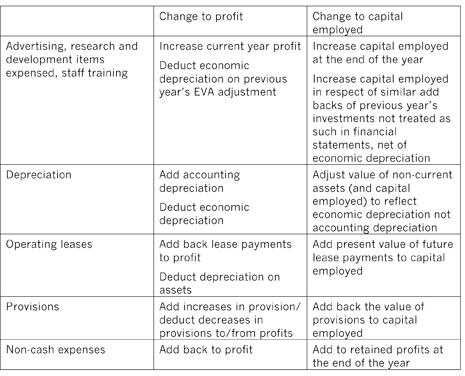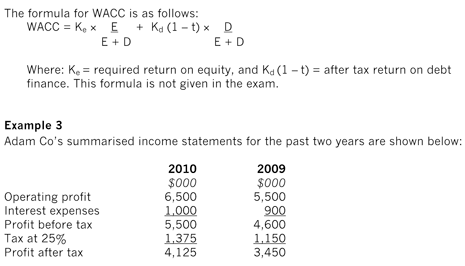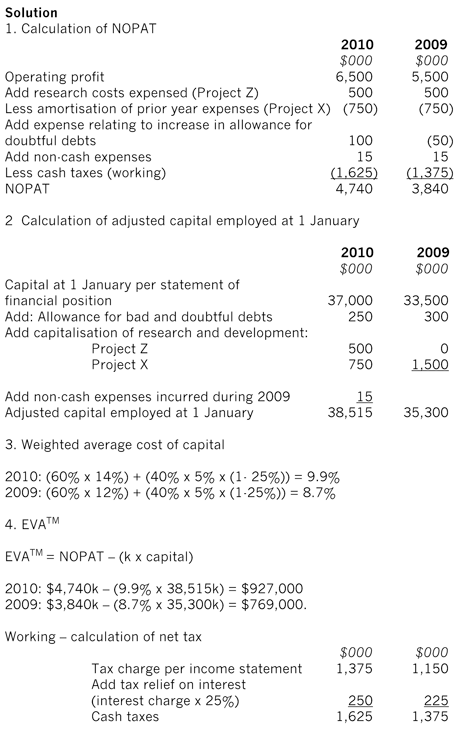Relevant to ACCA Qualification Paper P5
A successful performance measure evaluates how well an organisation performs in relation to its objectives. Since the primary objective of commercial organisations is normally assumed to be the maximisation of the wealth of its shareholders, it follows that performance measures should evaluate this. In practice, many organisations use profit-based measures as the primary measure of their financial performance. Two problems relating to profit in this area are:
- Profit ignores the cost of equity capital. Companies only generate wealth when they generate a return in excess of the return required by providers of capital – both equity and debt. In financial statements, the calculation of profit does take into account the cost of debt finance, but ignores the cost of equity finance.
- Profits calculated in accordance with accounting standards do not truly reflect the wealth that has been created, and are subject to manipulation by accountants.
Economic Value Added – or EVA – is a performance measurement system that aims to overcome these two weaknesses. EVA was developed by the US consulting firm Stern Stewart & Co, and it has gained widespread use among many well-known companies such as Siemens, Coca Cola and Herman Miller.
Residual income
EVA is based on the residual income technique that has been used since the early 20th century. Residual income is a performance measure normally used for assessing the performance of divisions, in which a finance charge is deducted from the profits of the division. The finance charge is calculated as the net assets of the division, multiplied by an interest rate – normally the company’s weighted average cost of capital.
Example 1
Division A made a profit of $10,000 during the most recent financial year. The capital used by the division (equity plus long-term debt) was $70,000. The weighted average cost of capital of the company is 13%, and this is used when calculating the finance charge. The residual income of Division A was therefore:
$
Profit 10,000
Finance charge 9,100 (70,000 x 13%)
Residual income 900
The finance charge of $9,100 represents the minimum return required by the providers of finance on the $70,000 capital they provided. Since the actual profit of the division exceeds this, the division has recorded residual income of $900.
EVA is similar in structure to residual income. It can be stated as:
EVA = NOPAT – (k x capital)
Where: NOPAT = Net operating profits after tax.
(k x capital) is the finance charge, where k = the firms weighted average cost of capital
and
capital = equity plus long-term debt of the company at the start of the period.
This formula will not necessarily be given in the exam, so you need to learn it.
NOPAT
NOPAT means net operating profit after tax. This profit figure shows profits before taking out the cost of interest. The cost of interest is included in the finance charge that is deducted from NOPAT when calculating EVA. Two approaches to adjusting for interest are taken. Either:
- start with operating profit. Then deduct the adjusted tax charge. The tax charge should be adjusted because it includes the tax benefit of interest. Since interest is a tax-deductible item, having interest in the income statement means that the tax charge is lower. Since we are taking the cost of interest out of the income statement, it is also necessary to remove the tax benefit of it from the tax charge. To do this, multiply the interest by the tax rate, and add this to the tax charge, or
- start with profit after tax, and add back the net cost of interest. This is the interest charge multiplied by (1 – rate of corporate tax).
Example 2
An extract from the income statement of Alpha Inc shows the following:
$
Operating profit 1,000
Interest charge (100)
Profit before tax 900
Tax at 25% (225)
Profit after tax 675
NOPAT is either:
Profit after tax 675
Add after tax interest (100 x 75%) 75
NOPAT 750
or:
Operating profit 1,000
Less tax charge adjusted to exclude
tax relief on interest (225 + (100 x 25%)) 250
NOPAT 750
Accounting adjustments
The major departure from residual income is the adjustments made to reported financial profits and capital. Proponents of EVA argue that profits calculated in accordance with financial reporting principles do not reflect the economic value generated by the company. There are three main reasons for these adjustments:
- To convert from accrual to cash accounting. Investors are interested in cash flows, so many of the accounting adjustments made, such as allowances for doubtful debt, should be eliminated.
- Spending on ‘market building’ items such as research, staff training and advertising costs should be capitalised to the extent that they have not been in the financial statements. This may contradict IAS 38, but Stern Stewart believes that financial reporting standards are too strict in this regard, and discourage managers from investing in items that bring long-term benefits.
- Unusual items of profit or expenditure should be ignored.
Stern Stewart famously remarked that, for some companies, 160 adjustments were made to the accounting profits in calculating NOPAT. The Paper P5 exam will test only the most common adjustments, which are as follows:
- Expenditure on promotional activities, research and development and employee training should be capitalised. If they have been treated as an expense in the income statement, they should be added back to profit, and added to capital employed in the year in which the expenses were incurred.
- The depreciation charge is added back to profit, and instead a charge for economic depreciation is made. Economic depreciation reflects the true change in value of assets during the period, unlike accounting depreciation. If no detail is given on economic depreciation then candidates should assume that accounting depreciation represents a reasonable approximation for it.
- Items such as provisions, allowances for doubtful debts, deferred tax provisions and allowances for inventory should be added back to capital employed, since these represent over-prudence on the part of financial accountants, and this understates the true value of capital employed. Any expenses or income recognised in the income statement in respect of movements in such items should also be removed from NOPAT.
- Non-cash expenses are treated with suspicion, as these are likely to reflect the finance director manipulating the profits rather than any real costs. If the costs were real, then cash would have been paid for them. Therefore, non-cash expenses should be added back to profits, and to capital employed.
- The treatment of operating leases is inconsistent with the treatment of finance leases, with finance leases being capitalised and operating leases being excluded from the statement of financial position. This inconsistency means that firms can take advantage of operating leases to reduce the reported capital employed and , therefore , increase the calculated EVA. When calculating EVA therefore, operating leases should be capitalised and added to capital employed.
On the income statement side, operating lease charges should be added back. In principle, interest and depreciation should then be charged on the assets acquired under finance leases. However, any interest would then be added back to profit in calculating NOPAT, and accounting depreciation would be replaced with economic depreciation.
The lease adjustments may soon become irrelevant as the International Accounting Standards Board (IASB) is currently revising IAS 17 and the revised standard may require the same treatment for both finance and operating leases. - The tax charge. This is based on ‘ cash taxes ’ rather than the accruals based methods used in financial reporting. The cash taxes are calculated as follows:
$
Tax charge per income statement X
Less increase (add reduction) in deferred tax provision (X)/X
Add tax benefit of interest X
Cash taxes X
Note: no further adjustments are made in respect of the tax on the other items adjusted for during the calculation of NOPAT.
The adjustments can be summarised by the following table:

The finance charge
The finance charge is calculated by multiplying the capital employed by the weighted average cost of capital (WACC). Capital employed is taken to mean equity plus long-term debt, and it is normal to take capital employed at the start of the year. In practice, the best approach is to start with capital employed from the published statement of financial position, and then to make the adjustments mentioned in the section above.

Further information is as follows:
- The allowance f or doubtful debts was $300,000 at 1 January 2009, $250,000 at 31 December 2009 and $350,000 at 31 December 2010.
- Research and development costs of $500,000 were incurred during each of the years 2009 and 2010 on Project Z. These costs were expensed in the income statement, as they did not meet the requirements of financial reporting standards for capitalisation. Project Z is not complete yet.
- At the end of 2008, the company had completed another research and development project, Project X. Total expenditure on this project had been $1,500,000, none of which had been capitalised in the financial statements. The product developed by Project X went on sale on 1 January 2009, and the product was a great success. The product ’s life cycle was only two years, so no further sales of the product are expected after 31 December 2010.
- The company incurred non-cash expenses of $15,000 in both years.
- Capital employed (equity plus debt) per the statement of financial position was $33,500 at 1 January 2009, and $37,000 at 1 January 2010 .
- The pre - tax cost of debt was 5% in each year. The estimated cost of equity was 12% in 2009 and 14% in 2010. The rate of corporate income tax was 25% during both years.
- The company’s capital structure was 60% equity and 40% debt.
- There was no provision for deferred tax.
Required
Calculate Economic Value Added (EVA).

Note: The research and development expenditure on both Project X and Project Z was expensed in the income statement in accordance with financial reporting standards. Since it is considered to be market building expenditure, however, it is added back to profits in the year it was incurred, and added back to capital employed at the end of the year in which it was incurred, when calculating EVA.
Such capitalisation should also be amortised over the period that it brings benefits. Therefore, in the case of Project X, this has been amortised over the two years during which the company sold products based on it. Project Z has not been completed yet, so no amortisation has taken place.
A reconciliation of the balance can be shown as follows:
Project Z Project X Total
$000 $000 $000
Balance at 1 January 2009 0 1,500 1,500
Expenditure incurred during 2009 500 0 500
Less amortisation during 2009 0 (750) (750)
Balance at 1 Jan 2010 500 750 1,250
In the second part of this article, to be published in the next issue of Student Accountant, we will focus on interpreting the calculated EVA , and its use as both an organisational performance measure and divisional performance measure.
Written by a member of the APM examining team
References
- John D Martin and J William Petty, Value Based Management, Harvard Business School Press 2000.
- Shane Johnson and Matt Bamber, ‘Economic Value Added’, Student Accountant (2007), ACCA
- Erik Stern, EVA Has Potential to Boost Employees’ Motivation, www.SternStewart.com/2011/04/erik-stern-eva/


